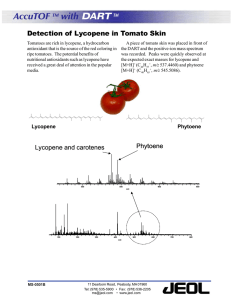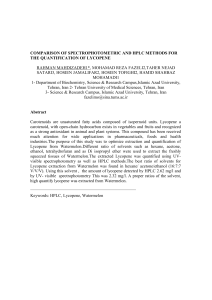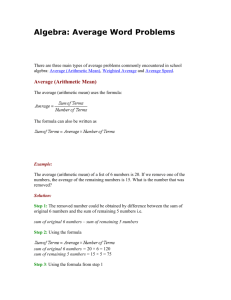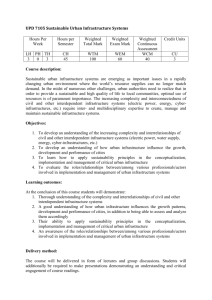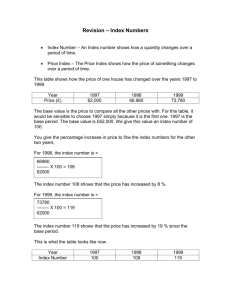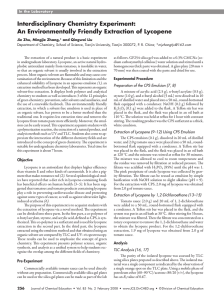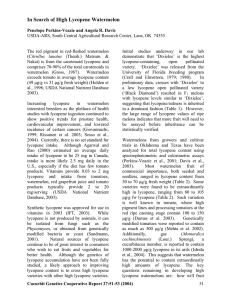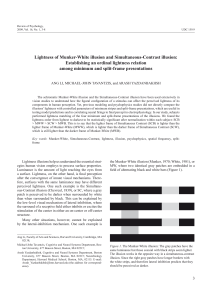Introduction to Error Analysis:
advertisement
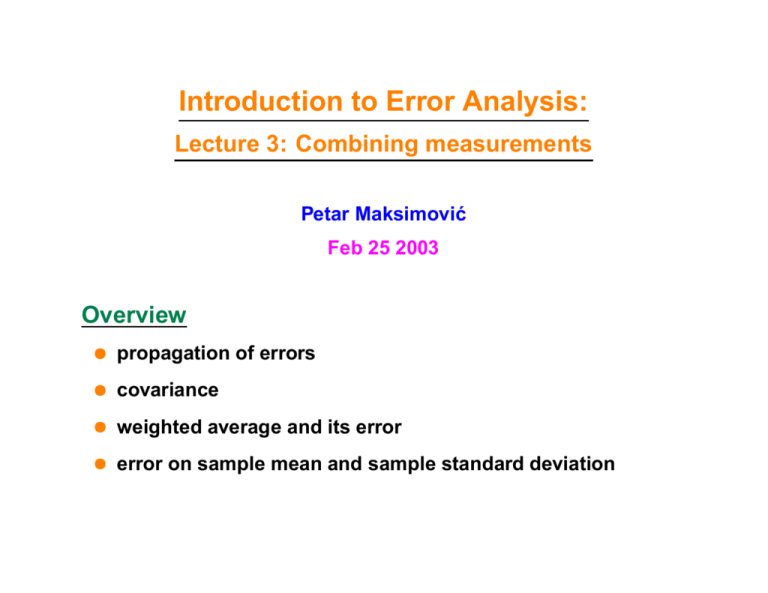
Introduction to Error Analysis: Lecture 3: Combining measurements Petar Maksimović Feb 25 2003 Overview propagation of errors covariance weighted average and its error error on sample mean and sample standard deviation Propagation of Errors , is a known function of ... assume that most probable value for is is the mean of by definition of variance in Taylor series: expand Variance of is COvariance. Describes correlation between errors on and . For uncorrelated errors This is the error propagation equation. Examples const. Thus where where const. correlation can be negative, i.e. if an error on counterballanced by a proportional error can get very small! on , More examples etc., etc. Weighted average From lecture #2: calculation of the mean minimizing , but now minimum at const. each measurement is weighted by so-called weighted average is ! Error on weighted average points contribute to a weighted average straight application of the error propagation equation: putting both together Example of weighted average error weighted average morale: result: practically doesn’t matter! Error on the mean measurements from the same parent population ( , ) from Lecture #1: sample mean and sample standard deviation are best estimators of the parent population but: more measurements still gives same : our knowledge of shape of parent population improves and thus of original true error on each point but how well do we know the true value? (i.e. ?) points from same population with : if Standard deviation of the mean, or standard error. Example: Lightness vs Lycopene content, scatter plot Lycopene content lyc:Light 120 110 100 90 80 70 60 50 30 40 50 60 Lightness Example: Lightness vs Lycopene content: RMS as Error Lycopene content Lightness vs Lycopene content -- spread option 105 100 95 90 85 80 75 70 65 60 30 35 40 45 50 55 Lightness Points don’t scatter enough the error bars are too large! Example: Lightness vs Lycopene content: Error on Mean Lycopene content Lightness vs Lycopene content 100 95 90 85 80 75 70 65 60 30 35 40 45 50 55 Lightness This looks much better! A note on reporting measurement results keep only one digit of precision on the error – everything else is noise Example: exception: when the first digit is , keep two: Example: round off the final value of the measurement up to the significant digits of the errors Example: kg kg rounding rules: and above round up and below round down : if the digit to the right is even round down, else round up (reason: reduces systematic erorrs in rounding)
